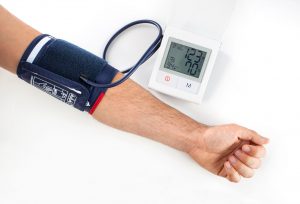Take Your Own Blood Pressure At Home
If you’ve been diagnosed with heart disease, or are simply considered at a higher risk for high blood pressure due to smoking, alcohol use, stress levels, hereditary factors, or other reasons, your doctor may recommend that you monitor and take your own blood pressure at home. With an inexpensive blood pressure cuff available at most pharmacies or online, it’s easy to take your own blood pressure at home and monitor for spikes that might indicate heart disease.
Timing
You may experience spikes in your blood pressure due to stress, drinking caffeinated drinks, taking certain medications, cold temperatures, or smoking. Take those factors into consideration when deciding upon a time to take your blood pressure. Thirty minutes after your second cup of coffee, for example, you may get an elevated measurement. Choose a consistent time to check your blood pressure every day to get a good idea of whether it’s fluctuating. Your doctor may want you to take it more than one time per day to check for changes throughout the day.
Prepare and Relax
Prepare to take your blood pressure by finding a quiet space. You’ll need to be able to hear your heartbeat. Empty your bladder before you begin- a full bladder may affect your reading. Make sure you’re comfortable and relaxed. You’ll want to sit in a chair with your arm resting comfortably at heart level for five to ten minutes to allow your heart to settle into a steady rhythm that gives you an accurate reading.
Find your Pulse
Gently press your index and middle fingers to the inside center of the bend of your elbow to locate your brachial pulse. Press the stethoscope or arm cuff gently against that area. Place the stethoscope in your ears and make sure you can hear your heartbeat. If you have trouble locating your heartbeat, make sure the stethoscope earpieces are tilted slightly forward for the best sound.
The Cuff

You may be using a digital or manual cuff. Remove any tight sleeves or roll up your sleeve so that the cuff rests against your skin. Slide the cuff on, so that the lower edge is about 1 inch above your elbow. Fasten the cuff snuggly, but not so tightly that it cuts off your circulation. Follow the instructions that came with your monitor to take the blood pressure reading.
Be sure to write down your pressure readings each day, so that you and your doctor can compare them and establish a solid baseline for your blood pressure. Call today for your appointment with Dr. Ciuffo.

